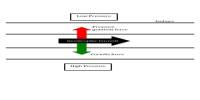Scientists from KAUST have shown how small semiconductor lasers may be easily modified to make them more useful for lighting and holography. The study has been released in the journal Optica.
All the components of a laser may be crammed into a micrometer-scale gadget thanks to semiconductor technology. This consists of a highly reflective mirror on each side of an optically active, light-amplification zone.
Semiconductor lasers, also known as laser diodes, are compact and efficient devices that emit coherent light through stimulated emission in a semiconductor material. They are widely used in various applications, including telecommunications, optical storage devices, laser printers, barcode readers, laser pointers, medical equipment, and many others.
One such device is the vertical-cavity surface emitting laser, or VCSEL. These structures are made by carefully arranging, or growing, alternating layers of semiconductor over a substrate to produce a stack that is highly reflective. A second reflective stack is then produced on top of the active material. The top of the device can then emit laser light.
Because hundreds of VCSELs may be produced and employed simultaneously on the same substrate, they are advantageous. However, because of its propensity for a speckle-like profile, the beam is not suited for uses like lighting, holography, projection, and displays. For these, uniform light is needed on a plane that is perpendicular to the beam’s propagation direction.
VCSELs utilize an ordered cavity that allows the resonance of light in only a small number of modes with exceptionally high efficiency. The photons in these modes interfere with each other, resulting in speckles and low illumination quality.
Omar Alkhazragi
The cavity’s highly organized structure, which only permits a limited number of modes or light-ray paths to be emitted, is where the speckles come from.
“VCSELs utilize an ordered cavity that allows the resonance of light in only a small number of modes with exceptionally high efficiency,” explains researcher Omar Alkhazragi. “The photons in these modes interfere with each other, resulting in speckles and low illumination quality.”
Alkhazragi and KAUST colleagues, together with co-workers from China, have shown that speckles can be reduced in laser light from VCSELs simply by changing the shape of the device to break the symmetry of the cavity. This introduces chaotic behavior in the generated light and allows the emission of more modes.
Alkhazragi and the team compared VCSELs with the conventional cylindrical, or O-shaped, geometry to those with a D-shaped cavity. They noticed that the D-shaped devices had significantly lower coherence and, as a result, a maximum-possible 60% increase in optical power.
The chaotic dynamics of the light rays inside the chamber, according to the researchers, are responsible for this improvement. The visibility of the speckles is decreased because light is emitted in a variety of mutually incoherent modes.
“Machine learning could help design cavities that further maximize the number of modes, lower the coherence and thus reduce speckle density to below human perception,” says Alkhazragi.















